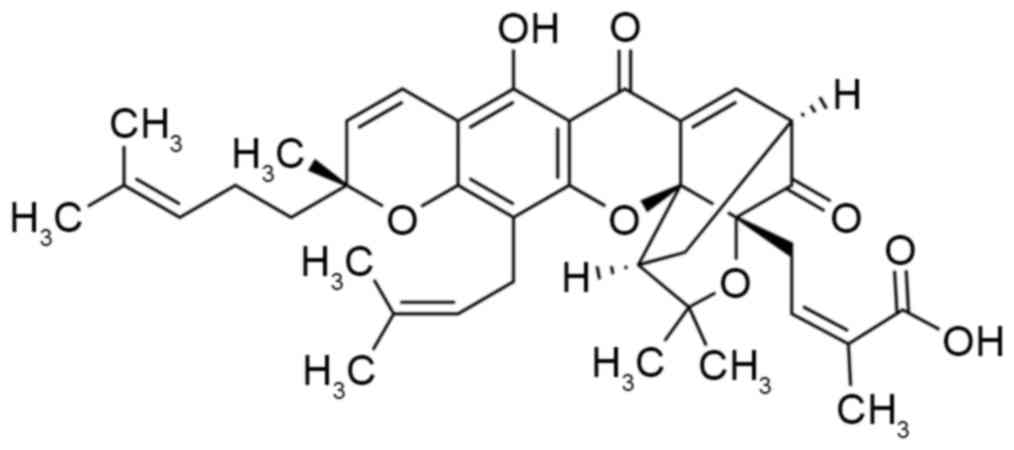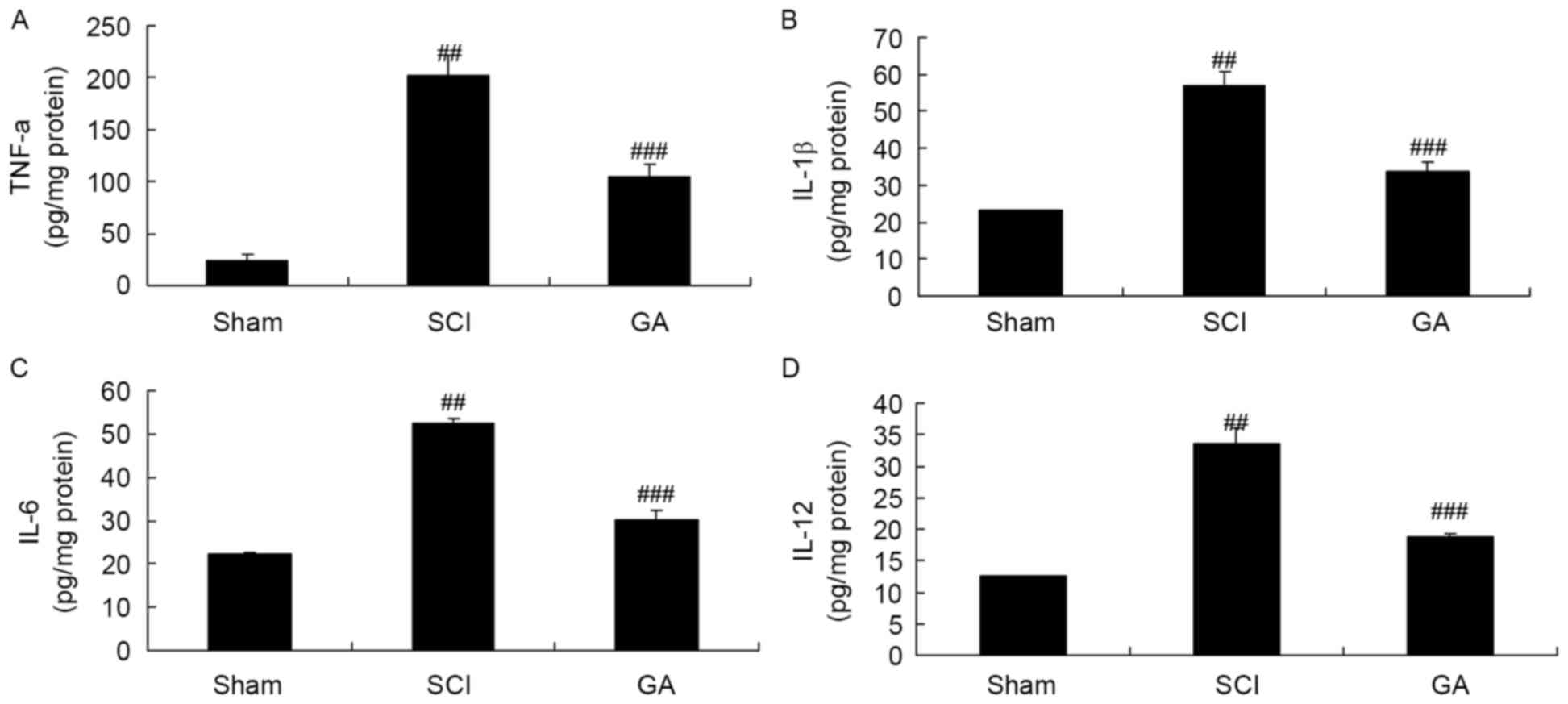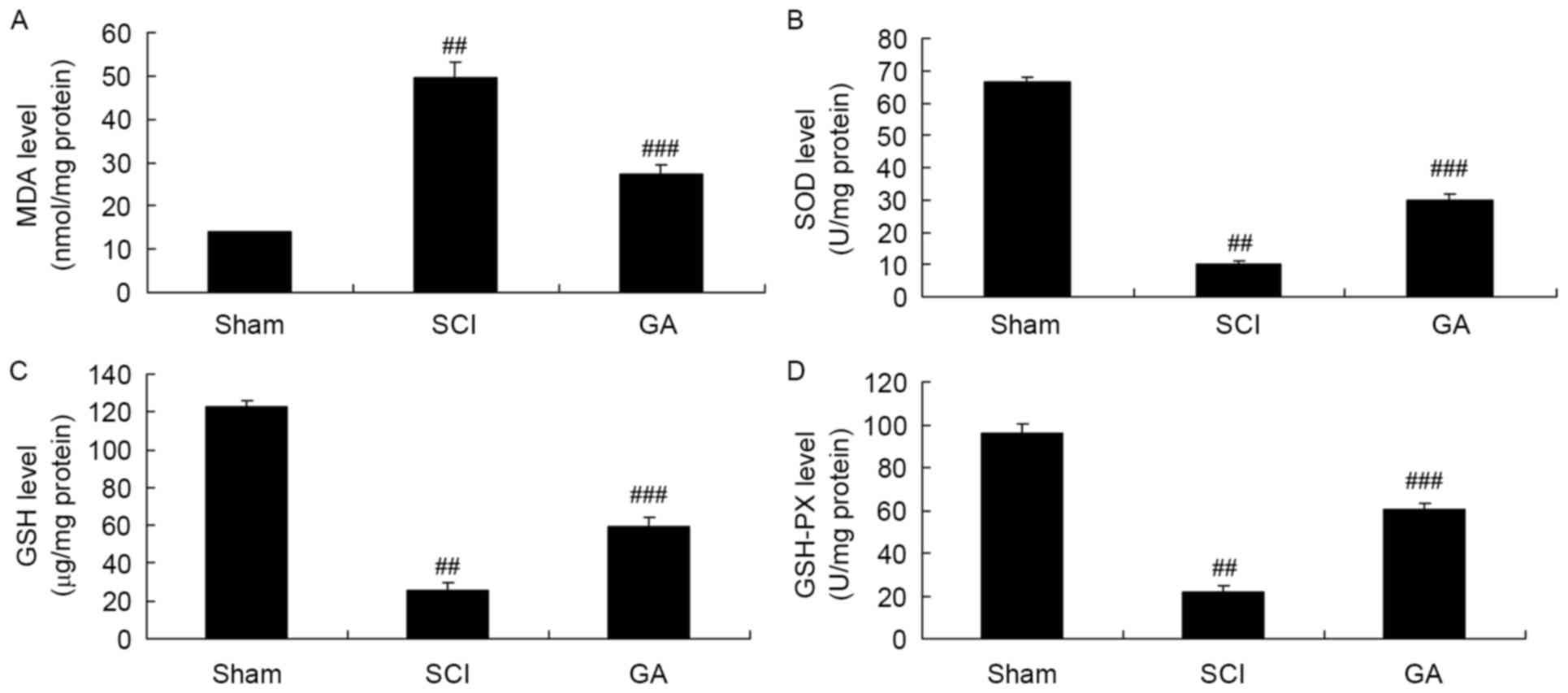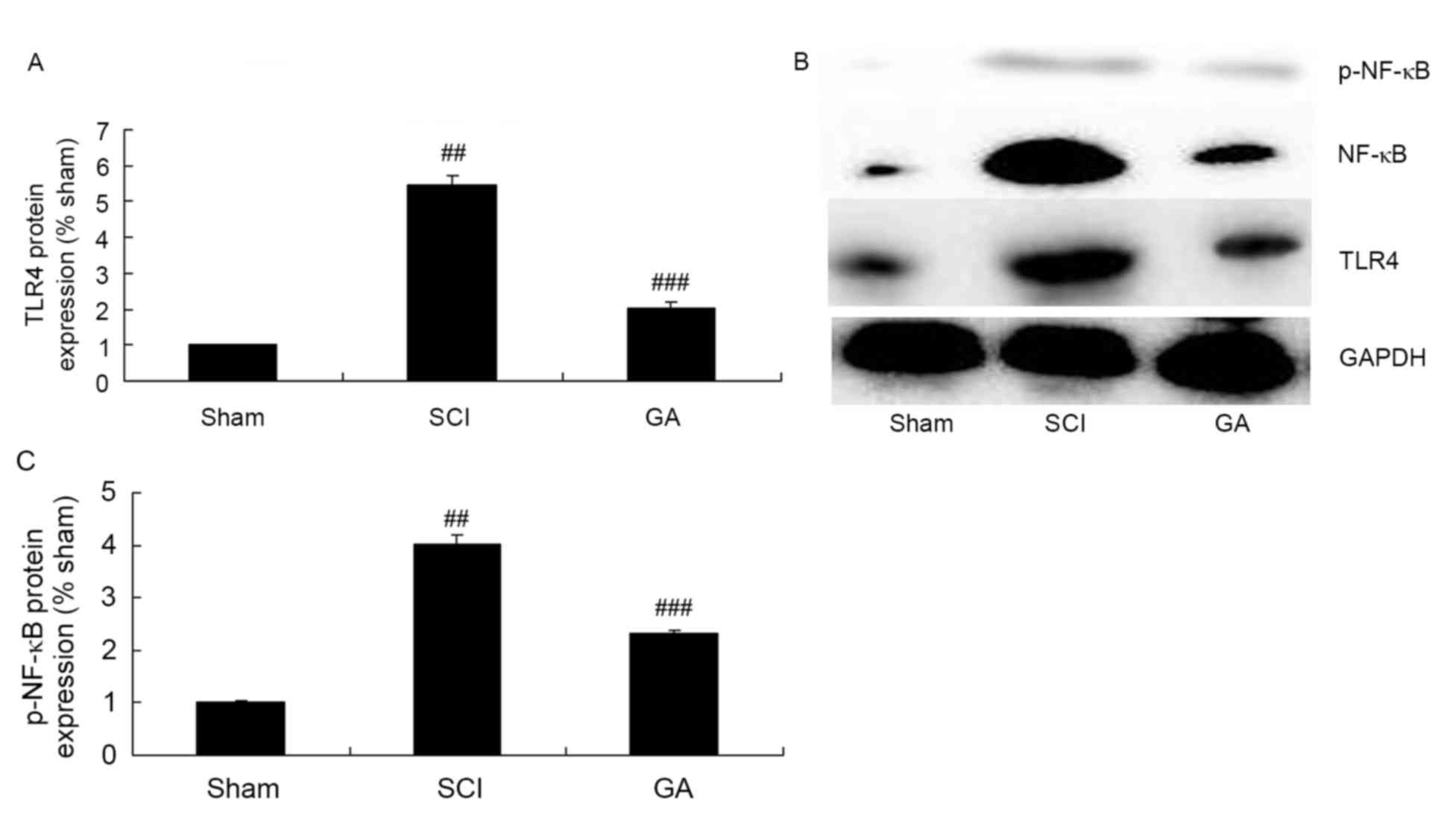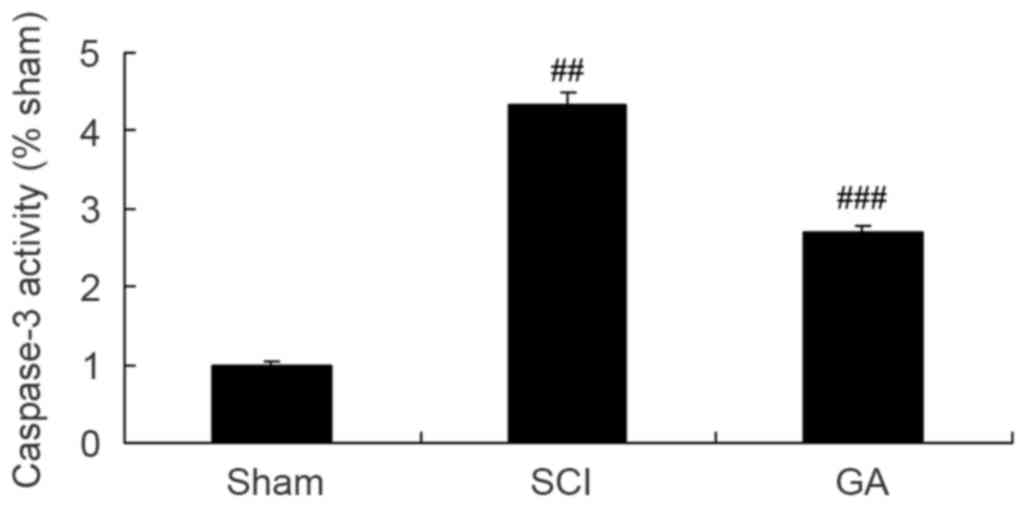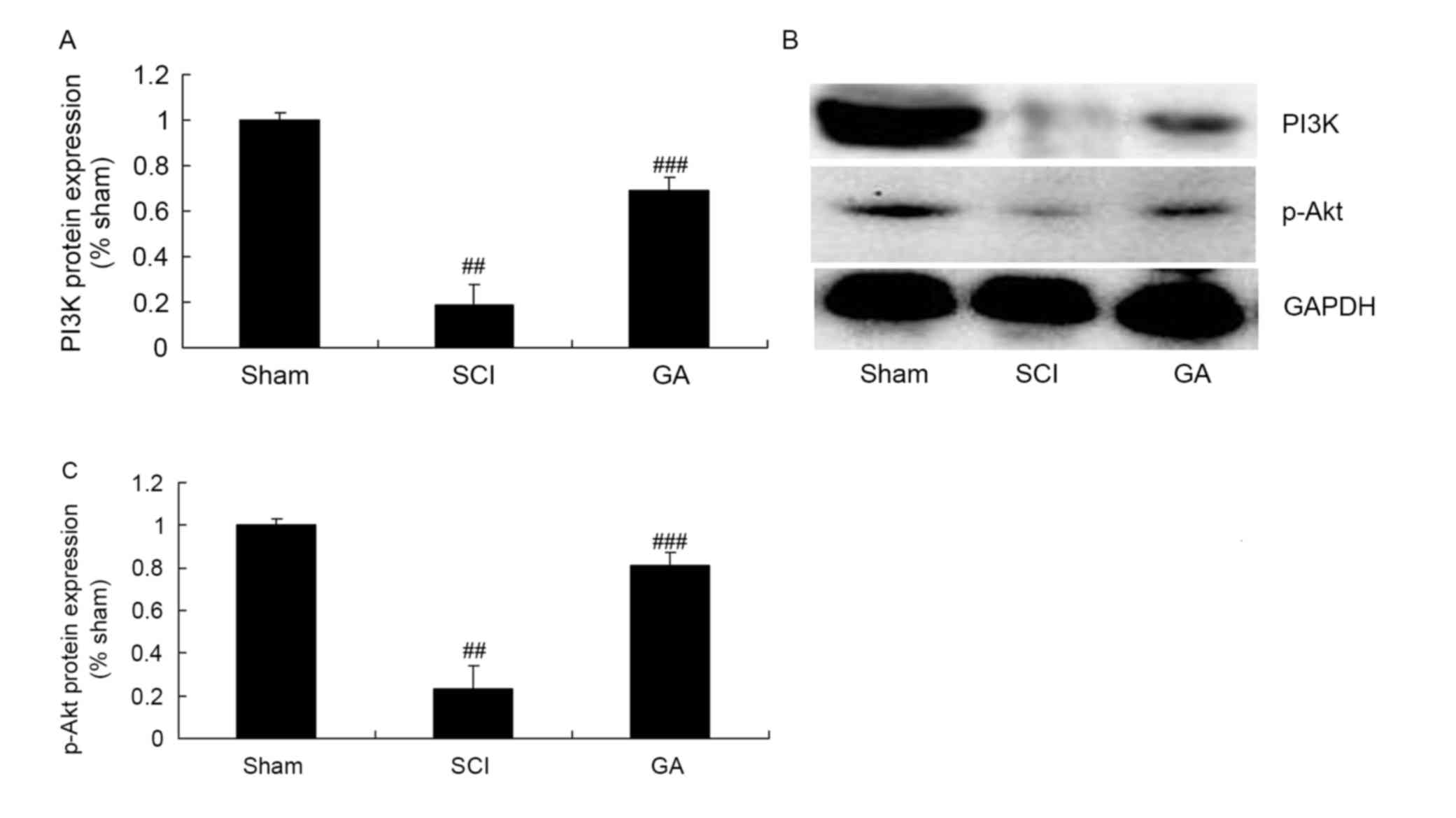|
1
|
Raithatha R, Carrico C, Powell ES,
Westgate PM, Ii Chelette KC, Lee K, Dunsmore L, Salles S and Sawaki
L: Non-invasive brain stimulation and robot-assisted gait training
after incomplete spinal cord injury: A randomized pilot study.
Neuro Rehabilitation. 38:15–25. 2016.
|
|
2
|
Ness LL and Field-Fote EC: Effect of
whole-body vibration on quadriceps spasticity in individuals with
spastic hypertonia due to spinal cord injury. Restor Neurol
Neurosci. 27:621–631. 2009.
|
|
3
|
Biglari B, vd Linden PH, Simon A, Aytac S,
Gerner HJ and Moghaddam A: Use of Medihoney as a non-surgical
therapy for chronic pressure ulcers in patients with spinal cord
injury. Spinal Cord. 50:165–169. 2012. View Article : Google Scholar
|
|
4
|
Nussbaum EL, Flett H, Hitzig SL,
McGillivray C, Leber D, Morris H and Jing F: Ultraviolet-C
irradiation in the management of pressure ulcers in people with
spinal cord injury: A randomized, placebo-controlled trial. Arch
Phys Med Rehabil. 94:650–659. 2013. View Article : Google Scholar
|
|
5
|
Cooney SJ, Zhao Y and Byrnes KR:
Characterization of the expression and inflammatory activity of
NADPH oxidase after spinal cord injury. Free Radic Res. 48:929–939.
2014. View Article : Google Scholar :
|
|
6
|
Lu T, Zhang C, Chai M and An Y:
Isoquercetin ameliorates tunicamycin-induced apoptosis in rat
dorsal root ganglion neurons via suppressing ROS-dependent
endoplasmic reticulum stress. Biomed Pharmacother. 80:343–351.
2016. View Article : Google Scholar
|
|
7
|
Jung SY, Kim DY, Yune TY, Shin DH, Baek SB
and Kim CJ: Treadmill exercise reduces spinal cord injury-induced
apoptosis by activating the PI3K/Akt pathway in rats. Exp Ther Med.
7:587–593. 2014. View Article : Google Scholar
|
|
8
|
Zhang P and Ma X: Effect of rutin on
spinal cord injury through inhibition of the expression of MIP-2
and activation of MMP-9, and downregulation of Akt phosphorylation.
Mol Med Rep. 12:7554–7560. 2015. View Article : Google Scholar
|
|
9
|
Kim JH, Kim SH, Cho SR, Lee JY, Kim JH,
Baek A and Jung HS: The modulation of neurotrophin and epigenetic
regulators: Implication for astrocyte proliferation and neuronal
cell apoptosis after spinal cord injury. Ann Rehabil Med.
40:559–567. 2016. View Article : Google Scholar :
|
|
10
|
Cao J, Wang JS, Ren XH and Zang WD: Spinal
sample showing p-JNK and P38 associated with the pain signaling
transduction of glial cell in neuropathic pain. Spinal Cord.
53:92–97. 2015. View Article : Google Scholar
|
|
11
|
Malon JT and Cao L: Calcitonin
gene-related peptide contributes to peripheral nerve injury-induced
mechanical hypersensitivity through CCL5 and p38 pathways. J
Neuroimmunol. 297:68–75. 2016. View Article : Google Scholar :
|
|
12
|
Ma J, Ma Y, Liu X, Chen S, Liu C, Qin A
and Fan S: Gambogic acid inhibits osteoclast formation and
ovariectomy-induced osteoporosis by suppressing the JNK, p38 and
Akt signalling pathways. Biochem J. 469:399–408. 2015. View Article : Google Scholar
|
|
13
|
Pandey MK, Karelia D and Amin SG: Gambogic
acid and its role in chronic diseases. Adv Exp Med Biol.
928:375–395. 2016. View Article : Google Scholar
|
|
14
|
Wu Y, Streijger F, Wang Y, Lin G, Christie
S, Mac-Thiong JM, Parent S, Bailey CS, Paquette S, Boyd MC, et al:
Parallel metabolomic profiling of cerebrospinal fluid and serum for
identifying biomarkers of injury severity after acute human spinal
cord injury. Sci Rep. 6:387182016. View Article : Google Scholar :
|
|
15
|
Zhang H, Wang L, Wen S, Xiang Q, Xiang X,
Xu C, Wan Y, Wang J, Li B, Wan Y, et al: Magnetic resonance imaging
tracking and assessing repair function of the bone marrow
mesenchymal stem cells transplantation in a rat model of spinal
cord injury. Oncotarget. 8:58985–58999. 2017.
|
|
16
|
Giuliano F, Sanchez-Ramos A, Löchner-Ernst
D, Del Popolo G, Cruz N, Leriche A, Lombardi G, Reichert S, Dahl P,
Elion-Mboussa A and Casariego J: Efficacy and safety of tadalafil
in men with erectile dysfunction following spinal cord injury. Arch
Neurol. 64:1584–1592. 2007. View Article : Google Scholar
|
|
17
|
Derakhshanrad N, Saberi H, Yekaninejad MS,
Eskandari G, Mardani A, Rahdari F and Meybodi KT: Safety of
granulocyte colony-stimulating factor (G-CSF) administration for
postrehabilitated motor complete spinal cord injury patients: An
open-label, phase I study. Cell Transplant. 22 Suppl 1:S139–S146.
2013. View Article : Google Scholar
|
|
18
|
Segal JL, Gonzales E, Yousefi S,
Jamshidipour L and Brunnemann SR: Circulating levels of IL-2R,
ICAM-1, and IL-6 in spinal cord injuries. Arch Phys Med Rehabil.
78:44–47. 1997. View Article : Google Scholar
|
|
19
|
Badner A, Vawda R, Laliberte A, Hong J,
Mikhail M, Jose A, Dragas R and Fehlings M: Early intravenous
delivery of human brain stromal cells modulates systemic
inflammation and leads to vasoprotection in traumatic spinal cord
injury. Stem Cells Transl Med. 5:991–1003. 2016. View Article : Google Scholar :
|
|
20
|
Khayrullina G, Bermudez S and Byrnes KR:
Inhibition of NOX2 reduces locomotor impairment, inflammation, and
oxidative stress after spinal cord injury. J Neuroinflammation.
12:1722015. View Article : Google Scholar :
|
|
21
|
Cascão R, Vidal B, Raquel H, Neves-Costa
A, Figueiredo N, Gupta V, Fonseca JE and Moita LF: Potent
anti-inflammatory and antiproliferative effects of gambogic acid in
a rat model of antigen-induced arthritis. Mediators Inflamm.
2014:1953272014. View Article : Google Scholar :
|
|
22
|
Yuan B, Liu D and Liu X: Spinal cord
stimulation exerts analgesia effects in chronic constriction injury
rats via suppression of the TLR4/NF-κB pathway. Neurosci Lett.
581:63–68. 2014. View Article : Google Scholar
|
|
23
|
Pratheeshkumar P, Son YO, Wang X, Divya
SP, Joseph B, Hitron JA, Wang L, Kim D, Yin Y, Roy RV, et al:
Cyanidin-3-glucoside inhibits UVB-induced oxidative damage and
inflammation by regulating MAP kinase and NF-κB signaling pathways
in SKH-1 hairless mice skin. Toxicol Appl Pharmacol. 280:127–137.
2014. View Article : Google Scholar :
|
|
24
|
Luo Y, Fu C, Wang Z, Zhang Z, Wang H and
Liu Y: Asiaticoside attenuates the effects of spinal cord injury
through antioxidant and anti-inflammatory effects, and inhibition
of the p38-MAPK mechanism. Mol Med Rep. 12:8294–8300. 2015.
View Article : Google Scholar
|
|
25
|
Horvath RJ, Landry RP, Romero-Sandoval EA
and DeLeo JA: Morphine tolerance attenuates the resolution of
postoperative pain and enhances spinal microglial p38 and
extracellular receptor kinase phosphorylation. Neuroscience.
169:843–854. 2010. View Article : Google Scholar :
|
|
26
|
Liu HJ, Yan H, Yan J, Li H, Chen L, Han LR
and Yang XF: Substance P promotes the proliferation, but inhibits
differentiation and mineralization of osteoblasts from rats with
spinal cord injury via RANKL/OPG system. PLoS One. 11:e01650632016.
View Article : Google Scholar :
|
|
27
|
Maïmoun L, Couret I, Mariano-Goulart D,
Dupuy AM, Micallef JP, Peruchon E, Ohanna F, Cristol JP, Rossi M
and Leroux JL: Changes in osteoprotegerin/RANKL system, bone
mineral density, and bone biochemicals markers in patients with
recent spinal cord injury. Calcif Tissue Int. 76:404–411. 2005.
View Article : Google Scholar
|
|
28
|
Zhang P, Zhang L, Zhu L, Chen F, Zhou S,
Tian T, Zhang Y, Jiang X, Li X, Zhang C, et al: The change tendency
of PI3K/Akt pathway after spinal cord injury. Am J Transl Res.
7:2223–2232. 2015.
|
|
29
|
Stover J and Nagatomi J: Cyclic pressure
stimulates DNA synthesis through the PI3K/Akt signaling pathway in
rat bladder smooth muscle cells. Ann Biomed Eng. 35:1585–1594.
2007. View Article : Google Scholar
|



